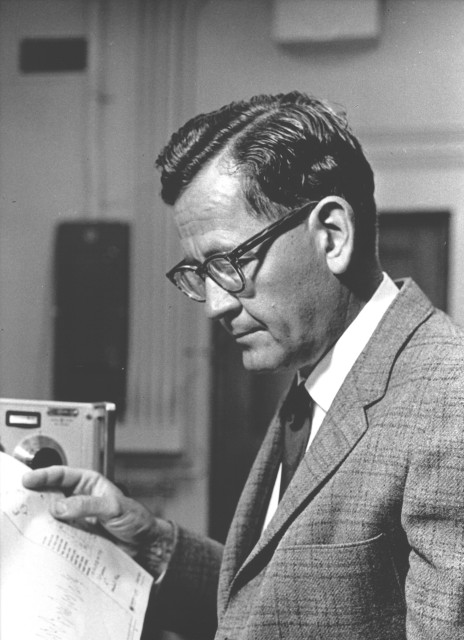John D. ("Jack") Roberts
1918-2016

Roberts made major research and pedagogic contributions to mechanistic organic chemistry. He pioneered the use of 14C and other isotopic labels to follow molecular rearrangements as, for example, in the complex and subtle solvolysis of cyclopropylcarbinyl systems. He introduced the terms "nonclassical" carbocations and "benzyne" into organic chemistry, and used isotopic labeling to establish the intermediacy of each. Roberts was early to recognize NMR's potential, and used 1H NMR to study nitrogen inversion, long-range spin-spin coupling and conformational isomerism, and later 13C and 15N NMR to study other reactions, including the active sites of certain enzymes. Roberts' superb short books on "Nuclear Magnetic Resonance" (1959), "Spin-Spin Splitting in High Resolution NMR" (1961) and "Notes on Molecular Orbital Calculations" (1961) did much to popularize and clarify these subjects for organic chemists. His highly successful text "Basic Principles of Organic Chemistry" (1964), written with Marjorie Caserio, introduced spectroscopy early to undergraduates. Roberts received many awards, including the Roger Adams (1967) and Priestley (1987) Medals. An excellent photographer, Roberts graciously supplied several of the photographs for the MSU collection.
Sponsor: Harold Hart
Location in chemistry building: Fifth Floor; East Wing North Wall; Sequence 2
Source: Professor Roberts